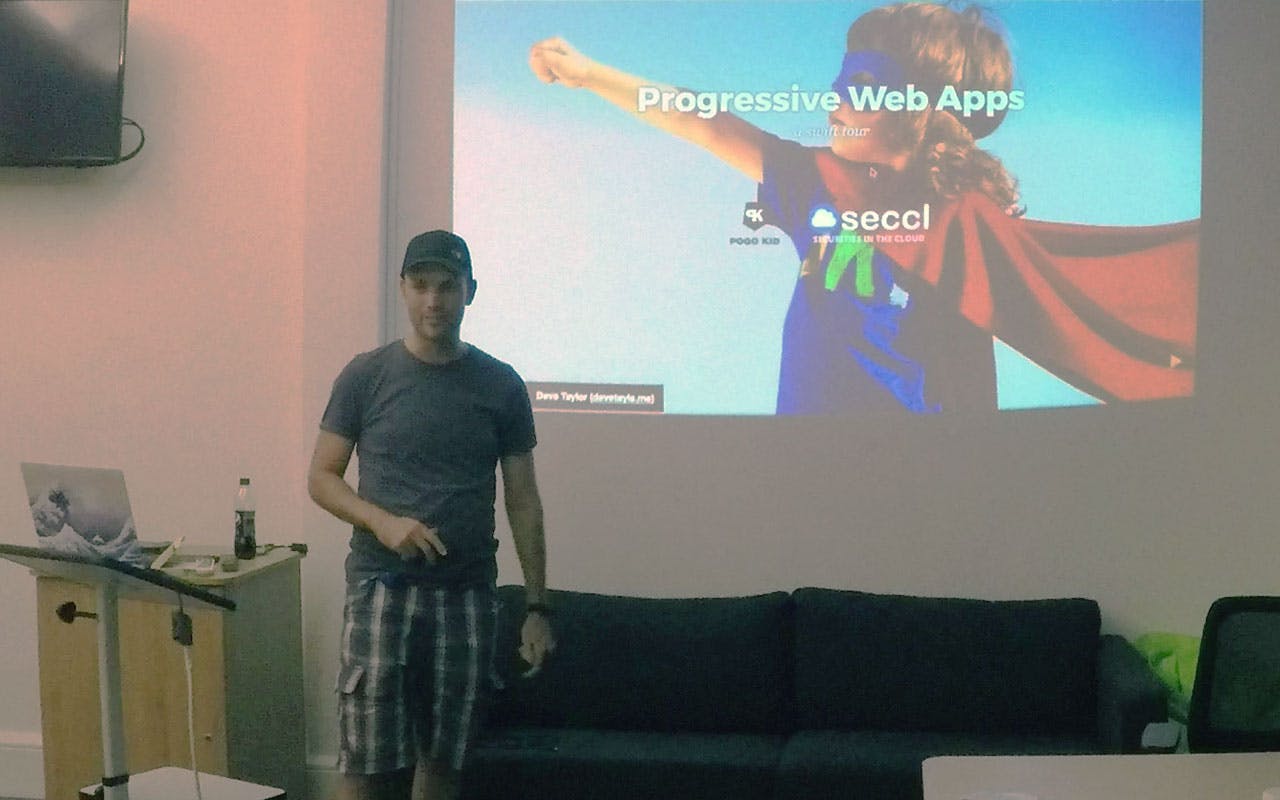Progressive Web Apps ⚡️ talk
26th Jul 2017

It was great to give a swift tour of Progressive Web Apps for the lovely people at BathCamp last thursday. Here are the slides and an outline of what we went through.
A few things have changed
We now know ...
- Most people only install apps when they buy their phone
- Most people only use common apps and no other
- The web platform has now got APIs for previously native-only features
Let's consider a few situations
The train journey
- Content doesn't know about network service
- Speed
- Intermittent
- Offline
I use this every day
Home screen visibility and easy access is important
- Engagement
- Visibility
- Convenience
Mobile Data is Expensive, Money and Time
Download on WiFi, experience offline
- Other Countries, £££ Expensive Data
- ⏰ 2G Connections still exist
Secure
- Progressive Web Apps can only be run and installed over a secure connection
- Service workers work like a proxy and can completely change the response to any request
- This makes sure that any service worker that gets installed hasn't been tampered with
App Shell
- The structural elements of the application
- Doesn't include content
Service Workers
- Control how requests are routed. Sit between browser and server.
- They don't rely on the website being open, you can define what events wake it up
- Push messages can wake up a service worker
- Limited to scope dictated by the folder the file is in
- Can be added without affecting unsupported browsers
if ('serviceWorker' in navigator) {navigator.serviceWorker.register('/sw.js').then(function() {console.log('Service Worker Registered');});}
var cacheName = 'myApp-v1';self.addEventListener('install', function(e) {console.log('[ServiceWorker] Install');e.waitUntil(caches.open(cacheName).then(function(cache) {console.log('[ServiceWorker] Caching app shell');return cache.addAll(filesToCache);}););});
var filesToCache = ['/','/index.html','/scripts/app.js'];
self.addEventListener('fetch', function(e) {console.log('[ServiceWorker] Fetch', e.request.url);e.respondWith(caches.match(e.request).then(function(response) {return response || fetch(e.request);}));});
Manifest
- Control how app appears to the user on the phone
- Control how the app launches
- Android will automatically detect a PWA and notify the user they can add it to their home screen
Link to the manifest
<link rel="manifest" href="/manifest.json" >
An example manifest
{"name": "Superhero","start_url": ".","display": "standalone","background_color": "#fff","description": "Wear a cape, change the world","icons": [{"src": "images/homescreen48.png","sizes": "48x48","type": "image/png"}]}
Best of the Web, and best of apps
- Reliability: Integral code installed on the device
- Speed: Fast Startup, customisable cacheing and offline
- User Engagement: Traditionally native app features like push notifications and GPS
- Integrated: Shows on the home screen and loading as a full-screen app
Support
Take a look at these resources to help you get going.
Udacity Progressive Web Apps Course

npm pw-precache module
npm i -g pw-precache
